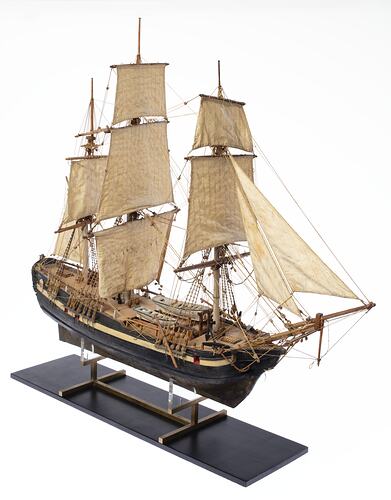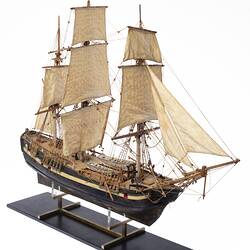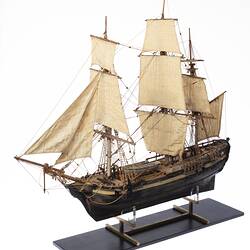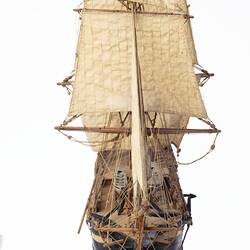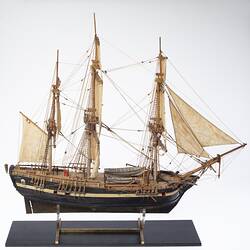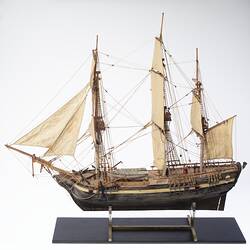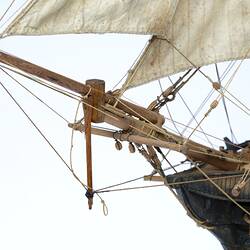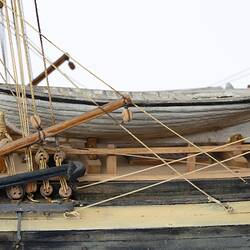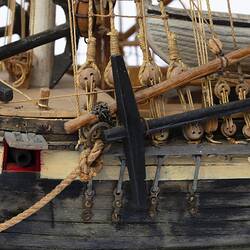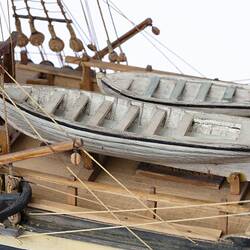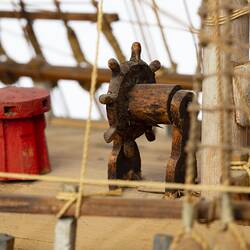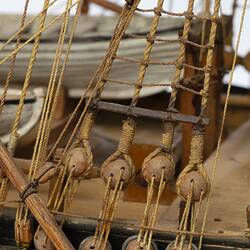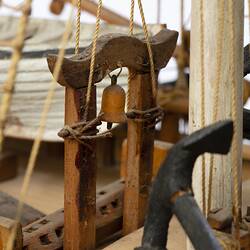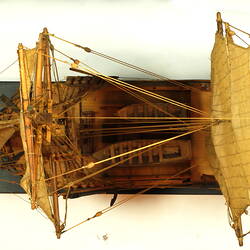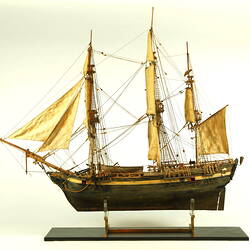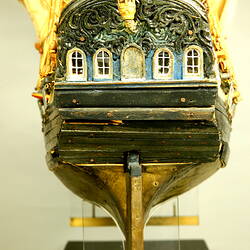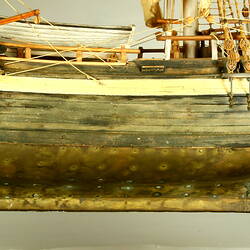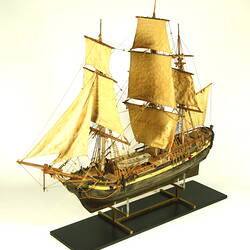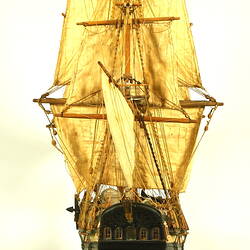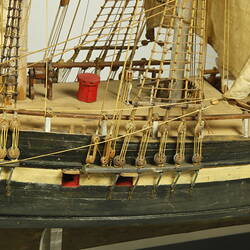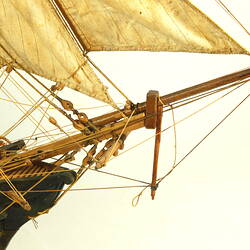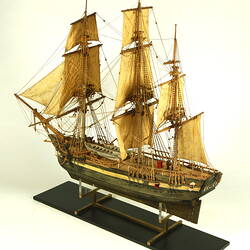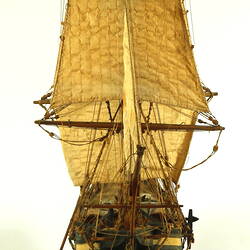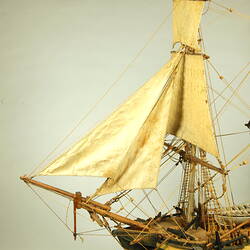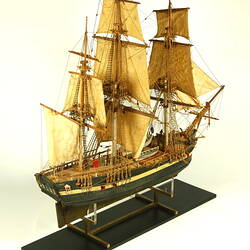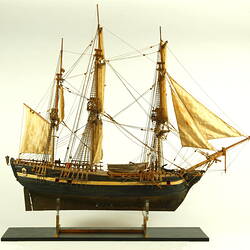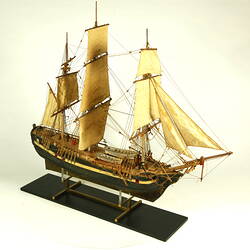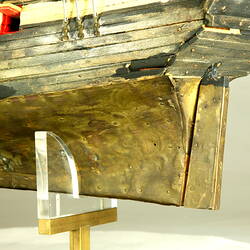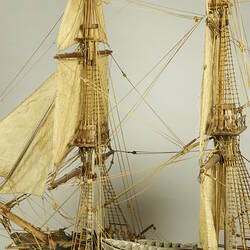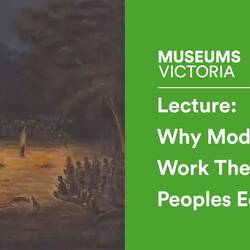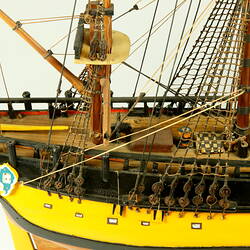Summary
Model of HM. Bark Endeavour built by the Australian artist and author Norman Lindsay (1879-1969) who was a keen builder of ship models for much of his life. This was the first ship model built by Lindsay, who was inspired by seeing the ship models in London's Science Museum, while he was living in England. He spent most of his spare time over some three months in the ship model gallery of the Science Museum in 1910. He sketched many of the sailing ship models and gained access to the workshop where he spoke to the craftsmen and "asked one of them what he would charge me for making the bare hull of an eighteenth century model...he said he could not do it for less than 60 Pounds...it was clear that if I wanted a ship model I would have to do it myself". After consulting a number of textbooks and drawings in London, Lindsay returned to Australia and built a model of the Endeavour. It was later purchased by the National Gallery of Victoria for £100 using funds from the Felton bequest and was loaned to the Industrial & Technological Museum in 1926 and subsequently purchased. Lindsay was very keen to show that the Endeavour was a fully rigged ship not a bark which has a different rigging arrangement with fore and aft sails on the mizzen mast. He wrote an article for the 1 April 1913 edition of 'The Lone Hand' magazine explaining his theory in detail although he acknowledged it would only be of interest to 'quidnuncs' who enjoyed arcane matters. The debate about the accuracy of this model continued for many years with the journalist and later novelist George Johnston writing an article about the model in The Argus newspaper on 4 November 1933. Lindsay continued to defend his model against its many critics until his death in 1969.
The 1768-1771 voyage of the HMS 'Endeavour' under the command of Captain James Cook was one of the most important scientific exploration journeys of all time with a continuing legacy for Australia, New Zealand and the Pacific region. After observing the transit of Venus from a temporary observatory at Tahiti in 1769, Cook sailed on to explore the "land the the Southward of the South Seas" as he wrote in the ship's log on 28 August 1769. Over the next 12 months the Endeavour explored and charted the coasts of New Zealand and Eastern Australia. Endeavour had originally been built at Whitby for use as a coastal coal carrier and when launched was named the 'Earl of Pembroke'. The vessel was described as a 'square-stern bark' of 368 tons. Its good sea-going qualities and large cargo capacity made this type of vessel a better choice for the long voyage than a naval ship. 'Bark' refers to the shape of the hull and should not be confused with a barque which more typically describes a specific rigging arrangement that has only fore and aft sails on the mizzen (or rear most) mast.
Physical Description
Model of a three masted sailing ship. The sails are unfurled, but not swelling. The hull has been painted black, with a white stripe.
More Information
-
Collecting Areas
-
Acquisition Information
Purchase & Subsequent Transfer from National Gallery of Victoria (NGV), Felton Bequest, 1926
-
Modelmaker
Mr Norman A. Lindsay, New South Wales, Australia, after 1910
Maker -
Previous Collection
Numismatics Collection, National Gallery of Victoria (NGV), Australia, by 1926-1976
Acquired by NGV 1914-1926. -
Classification
Water transport, Wind power - sailing vessels, Model barques - naval exploration
-
Category
-
Discipline
-
Type of item
-
Overall Dimensions
940 mm (Length), 284 mm (Width), 677 mm (Height)
Height does not include the stand.
-
Keywords
Modelmaking, Naval Vessels, Sailing Vessels, Scale Models, Ship Models
